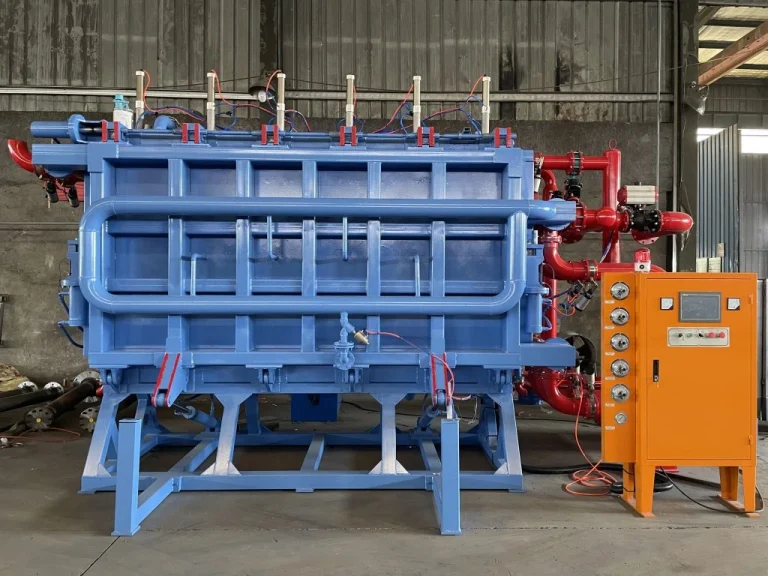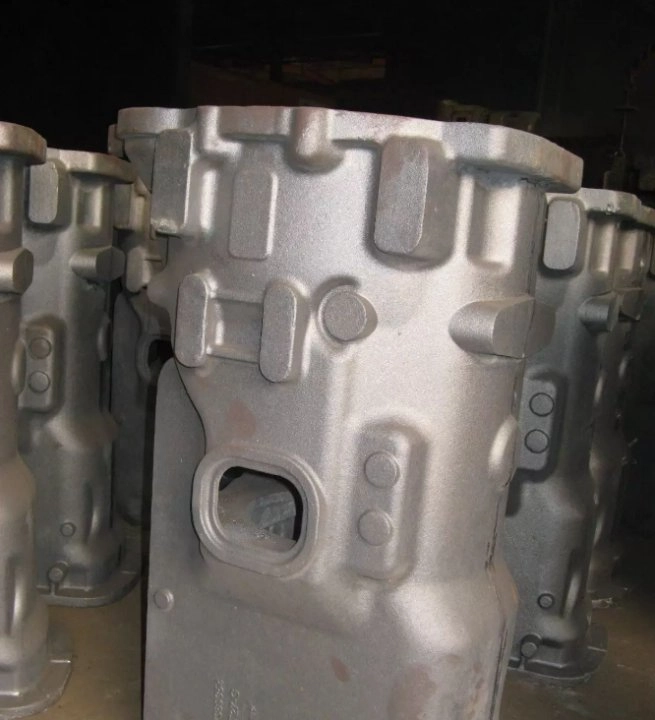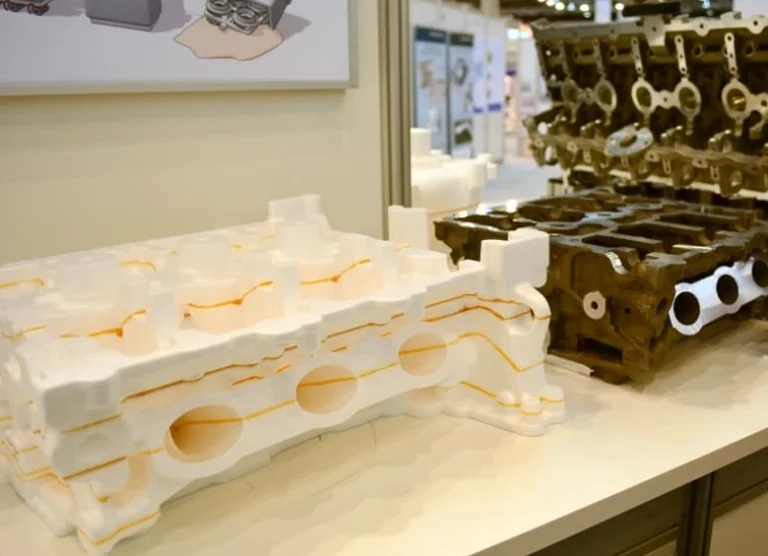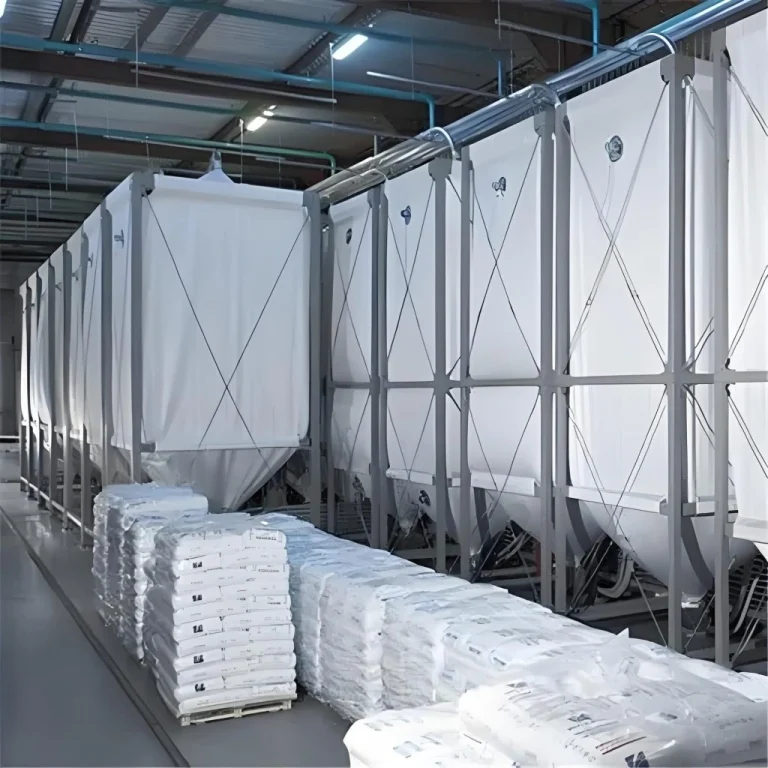Apa yang hilang buih?
Overview of the Process
Lost Foam Casting, also called expendable pattern casting or evaporative pattern casting, is a method to make metal parts. It uses a foam model, often made from expandable polystyrene (EPS), expandable polymethyl methacrylate (EPMMA), or a copolymer of styrene and methyl methacrylate (STMMA). This foam model matches the exact shape of the final ductile iron pipe fitting, including details like flanges, sockets, bends, and tees.
The process starts by shaping pre-expanded foam beads into a model. This model is coated with a special material for strength and a smooth finish. After drying, the coated model is placed in dry sand inside a flask. When hot ductile iron is poured in, the foam burns away instantly. The metal fills the space and hardens into the final shape.

Advantages of Lost Foam Casting for Ductile Iron Pipe Fittings
Better Production
Lost foam casting can be highly automated. This allows for making many ductile iron pipe fittings quickly. Using foam models skips slow and hard tasks like core making and mold assembly found in older methods. This leads to faster production and more output.
Foam models are made with great accuracy. This results in pipe fittings with exact sizes. It cuts down on extra machining and finishing work, saving time and money.
Also, ductile iron pipe fittings often have complex shapes. Lost foam casting handles these designs well. It supports tricky shapes that are tough or impossible with traditional methods.
How Lost Foam Casting Boosts Quality
Even Walls and Fewer Flaws
The foam model should have even wall thickness as much as possible. Any needed supports should be added. This design helps prevent bending during metal pouring.
To avoid gas-related flaws like holes or bubbles, ensure good airflow in the casting area. This provides enough oxygen for the foam to burn completely. A high-quality coating that lets gases escape helps remove gases from the burning foam.
Smoother Flow for Complex Shapes
Bends, like 90-degree, 45-degree, or custom angles, can be made accurately with lost foam casting. It creates smooth inner surfaces that lower fluid resistance.
Tees with complex inner shapes can also be cast well. This ensures good flow in pipeline systems.
Environmental and Cost Benefits
Eco-Friendly and Money-Saving
The dry sand in the molding process can be reused many times. This cuts down on waste compared to traditional sand-casting methods.
Also, efforts are made to recycle foam waste from production. This supports greener manufacturing.
From a cost view, setting up lost foam casting may cost more at first. But for large-scale production, it saves money over time.
Uses in the Pipe Fitting Industry
Flanged Pipe Fittings
Flanged fittings like flange adapters, flange unions, and flanged elbows are often made with lost foam casting. The flanges can be cast as part of the fitting body. This ensures strong, leak-proof connections.
Socket Fittings
Socket fittings, like socket elbows and socket reducers, benefit from accurate sizing with this method. Lost foam casting allows precise shapes, even for complex designs like equal-sized tees or reducing tees, supporting many pipeline setups.
Choose Lost Foam Casting Equipment from Hangzhou Ouchen Technology Co., LTD
Why Hangzhou Ouchen Technology Co., LTD
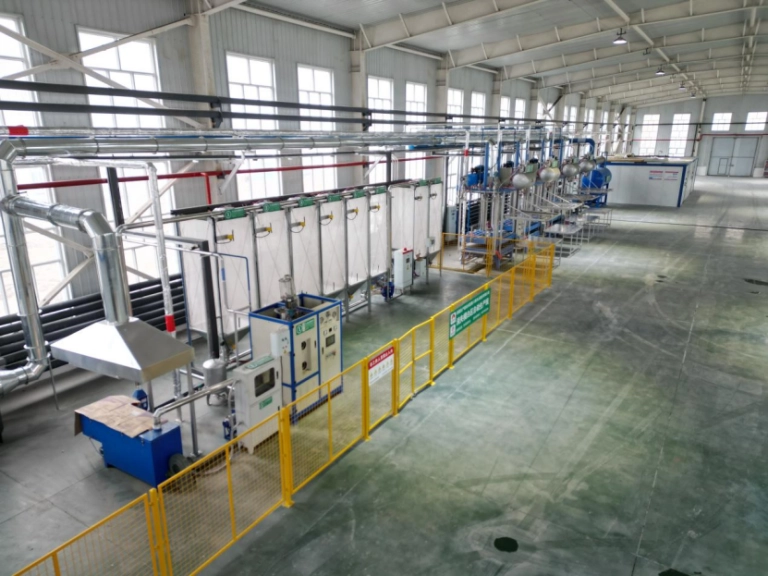
Hangzhou Ouchen Technology Co., Ltd specializes in high-end, smart lost foam casting equipment for white area processes. They use German EPS/EPP technology and their own patents, focusing on automation for lost mold casting.
Their EPS pre-foaming machines offer easy one-button operation, steady bead density with electronic weighing, and low moisture beads that reduce gas emissions during pouring. This cuts down on flaws like porosity, slag inclusion, and carbon defects.
They also provide advanced hydraulic forming machines for white mold manufacturing. These machines clamp over four times faster than traditional worm gear systems. This boosts productivity while keeping precision.
For drying, their air energy heat pump drying unit uses a high-efficiency heat pump as the main heat source. It ensures zero emissions and steady drying quality with smart temperature controls.
FAQ
What materials are used for patterns in lost foam casting?
Patterns are made from expandable polystyrene (EPS), polymethyl methacrylate (EPMMA), or copolymers like STMMA, depending on the needs.
How does lost foam improve dimensional accuracy?
Foam patterns are made with high precision. This results in fittings with very little deviation from the design.
Is this method good for mass production?
Lost foam casting is highly automated. It’s great for making hundreds of fittings per day with optimized setups.
How does Hangzhou Ouchen ensure equipment quality?
They stick to high efficiency, high quality, and low energy use. They’ve won Zhejiang Province science & technology SME awards, showing their engineering excellence.
Are there environmental benefits?
The equipment doesn’t release wastewater. This makes it an eco-friendly choice compared to traditional foundry methods.

